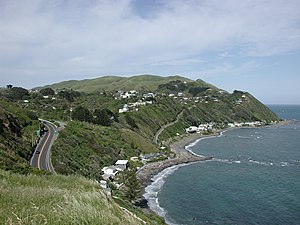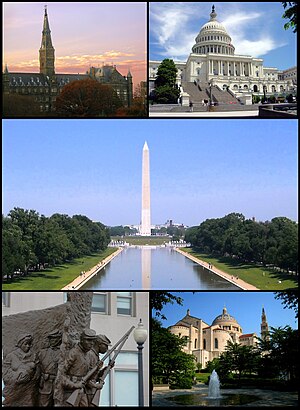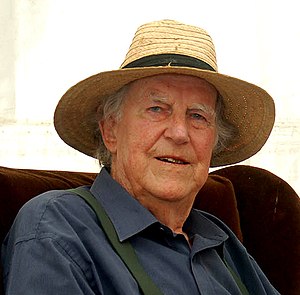.
The Anzac Story - Don't forget New Zealand was there too..
In 1914, the cabled reports from Europe gave an Increasingly desperate forecast - Europe was teetering towards war in a conflict between an increasingly stronger and powerful
German empire and the rival British, French and Russian alliance.
As Britain returned to work after the August Bank Holiday Monday, war was declared on Germany and the declaration involved the whole
British Empire. Australia's Prime Minister Joseph Cook said: "If the Old Country is at war, so are we".
Australia was in the middle of an election campaign. The opposition leader
Andrew Fisher promised Great Britain "our last man and our last shilling" in any conflict with Germany. And the Prime Minister responded. 'Our duty is quite clear - to gird up our loins and remember that we are
Britons'.
There was almost jubilation at the outbreak of war. Most thought that the war would be all over by Christmas and men rushed to recruiting centres because they didn't want to miss the excitement and adventure.
Read more of theAnzac Story
New Zealand already had compulsory
military training. For the war In Europe, Australia raised a new army of volunteers - the Australian Imperial Force (the
AIF). Recruiting began within days of the declaration of war.
Canada offered 30,000 men, Australia pledged 20,000 and
Those who were too young raised their ages - and most were accepted.(See 'Boy Soldiers')
In little over a month, marches were held in the main capital cities hoping to encourage others to join them. They were called "six bob a day tourists" because their pay was considered high and many thought the war would soon be over - when Britain's navy and army would tackle the German enemy.
The convoy with the Australian Division assembled in late October, and they were then joined by the New Zealanders. They formed the
Australian and New Zealand Army Corps - the Anzacs - on their way Europe via the Suez canal But the Anzacs disembarked In Egypt where they encamped near the pyramids ready for action against Turkey which had joined Germany in the war.
The Russians who were fighting on Germany's eastern front, wanted the British and French to tackle the Turks to reduce pressure on Russia. The Anzacs Joined the British and French in a dreadful baptism of fire at Gallipoli. The British commanders anticipated that the Gallipoli peninsula would be "open to landing on very easy terms" and Turkey would have a force of only 40,000 to meet them.
On 25 April 1915, the Anzacs landed at a difficult and desolate spot on the Gallipoli peninsula and the Turks appeared to be ready for them. The Anzacs made little headway over a series of rocky heights covered with thorny scrub. At great cost the Anzacs, British and French made small advances, but Its force was wasting with casualties and sickness, while the Turks were able to reinforce their forces.
In August another offensive was made against the Turks, casualties were heavy, but it failed and a defeat was inevitable, The
Gallipoli campaign was a debacle, Military censorship prevented the true story being told but a young Australian journalist, Keith Murdoch (father of Australian newspaper tycoon Rupert Murdoch) smuggled the story about the scale of the Dardanelles disaster back to the
Australian Prime Minister who sent it on to the British Prime Minister David Lloyd George, who was no friend of the British military establishment. It led directly to the dismissal of the British commander, Sir Ian Hamilton who never again was to hold a senior military position.
The British Government ordered an evacuation. By day, the Anzacs kept up their attacks with more Anzacs observed to be landing - by night the force was withdrawn, broken only by sporadic rifle and gunfire. On 20 December 1915, the Anzac retreat was complete, unnoticed by the Turks who continued to bombard the Anzacs' empty trenches. On 9 January 1916, the Turks carried out their last offensive on Gallipoli, revealing only that the entire force had withdrawn without casualty. The evacuation was the Allies most successful operation in Gallipoli.
A British Royal Commission into Gallipoli concluded that from the outset the risk of failure outweighed Its chances of success. The British had contributed 468,000 in the battle for Gallipoli with 33.512 killed. 7,636 missing and 78,000 wounded.
The Anzacs lost 8,000 men in Gallipoli and a further 18,000 were wounded. The Anzacs went on to serve with distinction in Palestine and on the western front in France.
Australia had a population of five million - 330,000 served in the war, 59,000 were killed.
New Zealand with a population of one million lost 18,000 men out of 110,000 and had 55000 wounded. These New Zealand figures (62%) represent the highest percentage of all units from the Anglo-Saxon world.
 Image via Wikipedia
Image via Wikipedia
![Reblog this post [with Zemanta]](http://img.zemanta.com/reblog_e.png?x-id=d6633ca2-7305-4354-94cd-cefc4b431636)

![Reblog this post [with Zemanta]](http://img.zemanta.com/reblog_e.png?x-id=ef0ba905-4d6a-41ce-b91e-0f7fcdc55480)

![Reblog this post [with Zemanta]](http://img.zemanta.com/reblog_e.png?x-id=7b387e74-0155-4179-9653-76c02c2f290a)

![Reblog this post [with Zemanta]](http://img.zemanta.com/reblog_e.png?x-id=5d21257b-75ef-4991-926c-6909c64f6d60)


![Reblog this post [with Zemanta]](http://img.zemanta.com/reblog_e.png?x-id=00a88221-7dc6-4335-b592-56f6282e38a2)

![Reblog this post [with Zemanta]](http://img.zemanta.com/reblog_e.png?x-id=ac6953f3-7839-410f-bc36-c6e3ce3f1540)

![Reblog this post [with Zemanta]](http://img.zemanta.com/reblog_e.png?x-id=ace9a5e5-c2bb-41f8-8faa-840b79761622)

![Reblog this post [with Zemanta]](http://img.zemanta.com/reblog_e.png?x-id=f2b64c33-bf6d-47d4-8903-447bf17d6d54)